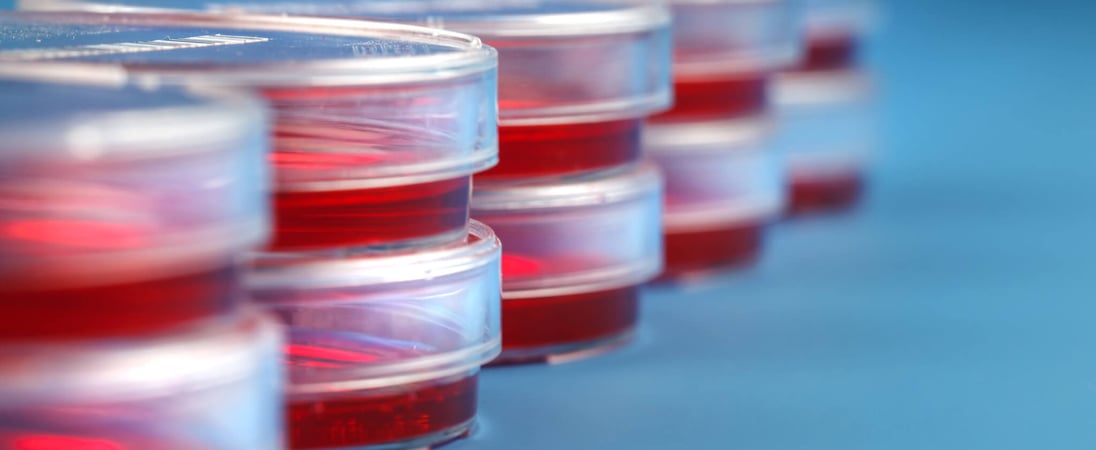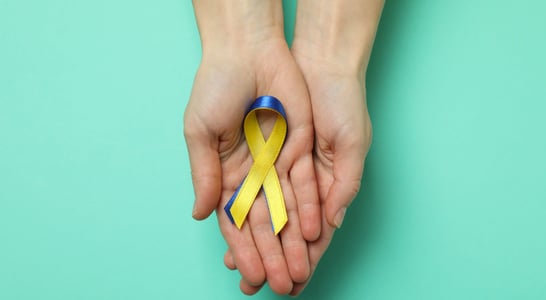
World Sickle Cell Day
Help increase public knowledge and awareness of Sickle Cell Disease, one of the main causes of death in children under the age of five in Africa.
Sickle Cell Disease is the world’s most common genetic blood disorder and while it is treatable, it affects hundreds of thousands of babies each year, many of whom will not live to their fifth birthday.
World Sickle Cell Day aims to share information about the disease, improve research, and provide hope and help for families who need it.
How to Observe World Sickle Cell Day
Get involved with being part of the solution by raising awareness and becoming more informed about Sickle Cell Disease. Try out some of these ways of observing World Sickle Cell Day:
Attend a World Sickle Cell Day Event
In observance of World Sickle Cell Day, some health groups that are dedicated to Sickle Cell Disease support or treatment will hold special educational celebrations.
Check with local health care providers or medical educators to find out how to get involved with supporting charities and foundations that offer help to those with Sickle Cell Disease. Attend a lecture, take the kids to a school event or find other ways to show support for the day.
Learn More About Sickle Cell Disease
Those who are not able to attend an event held in honor of World Sickle Cell Day might want to spend the day researching the illness, learning about the signs and symptoms and increasing their understanding of its global impact.
Here are some important facts about Sickle Cell Disease to get started with and perhaps share to raise awareness for the day:
-
A child inherits Sickle Cell Disease when they receive the gene from both sides, one gene from each parent.
-
Those who only inherit one gene don’t get the disease, but they do get the Sickle Cell Trait (SCT), which can then be passed on to any biological children they have.
-
Anemia is a common effect of SCD, often sending children to the emergency department of their hospital several times a year. Severe anemia can be treated with a blood transfusion.
History of World Sickle Cell Day
Since 2008, World Sickle Cell Day has been held annually, in order to help increase public knowledge and raise awareness of Sickle Cell Disease (SCD) and the struggles sufferers and their families go through.
The date was chosen to commemorate the day on which a resolution was officially adopted by the General Assembly of the United Nations, recognizing Sickle Cell Disease as a public health concern.
Previously referred to as Sickle Cell Anemia, this blood disease affects millions of people around the world, including both adults and children. It is a potentially fatal disease and, according to the World Health Organization (WHO), is one of the main causes of premature death amongst children under the age of five in various African countries.
In the United States, the Centers for Disease Control and Prevention (CDC) observes World Sickle Cell Day by raising awareness about the disease while highlighting pertinent information and resources for people who have SCD.
Sickle Cell Disease is marked by red blood cells that are shaped like a C or a “sickle”. These unhealthy cells die early and cause a shortage of healthy red blood cells, which creates many health problems. There is hope, however, as children who are born with SCD in places where medical care is available have a very strong likelihood of living a healthy and normal life.
While SCD is the cause of many deaths throughout the world, the disease is not contagious and can even be completely cured in some patients. However, the cure involves a very complicated bone marrow transplant procedure, which can be very risky and also too expensive for many who have the disease.
World Sickle Cell Day is here to promote correct information about this disease, including its cause and treatment. A more informed and educated public can help to improve care and prevent deaths – which is the hope and the reason for observing World Sickle Cell Day!
World Sickle Cell Day FAQs
How did World Sickle Cell Day originate?
In 2008, the United Nations General Assembly recognized sickle cell disease as a public health problem and designated June 19th as World Sickle Cell Day to raise awareness and promote education about the disease.
Are there unique traditions associated with World Sickle Cell Day?
Yes, various communities organize events like educational seminars, blood donation drives, and cultural performances to raise awareness and support those affected by SCD.
What are some common myths about sickle cell disease?
A prevalent myth is that SCD only affects individuals of African descent. In reality, it can affect people of various ethnic backgrounds, including those of Hispanic, Middle Eastern, and Mediterranean descent.
How do different countries participate in World Sickle Cell Day?
Countries worldwide engage in various activities such as lighting landmarks in red, hosting educational workshops, and conducting free health screenings to commemorate the day.
Is there a connection between sickle cell disease and malaria?
Yes, carrying one sickle cell gene (sickle cell trait) can provide some protection against severe malaria, which explains the higher prevalence of the trait in malaria-endemic regions.
What are some misconceptions about sickle cell disease?
A common misconception is that sickle cell disease is contagious. In fact, it is a genetic condition inherited from both parents and cannot be transmitted from person to person.
How has the global community advanced in addressing sickle cell disease?
Significant progress includes improved screening programs, better treatment options, and increased public awareness, leading to enhanced quality of life for those affected.
What role do support organizations play on World Sickle Cell Day?
Organizations like the Sickle Cell Society provide resources, advocate for policy changes, and support research efforts to improve patient care and outcomes.
Are there any notable historical figures associated with sickle cell disease awareness?
Edwidge Ebakisse Badassou, known as the “First Lady” of Francophone sickle cell advocacy, played a pivotal role in bringing attention to the disease in the early 2000s.
How can individuals contribute to World Sickle Cell Day?
People can participate by donating blood, organizing awareness events, supporting sickle cell organizations, and educating others about the disease to help reduce stigma and improve understanding.
Also on ...
View all holidaysWorld Tapas Day
Enjoy an array of small dishes or appetizers in place of a big meal in order to thank the country of Spain for introducing the world to tapas.
Real Food Day
Nourish your body with fresh, whole foods that fuel your energy and leave you feeling satisfied, without the guilt and sluggishness of processed junk.
National Garfield the Cat Day
Settle in with some coffee and lasagna as a nod to the pop culture icon Garfield, the cat who captured our hearts first as a comic strip, then in movies and more.
World Sauntering Day
Slow from a march to a saunter and give yourself time to enjoy your own time. Stop and smell the roses, take some extra time on your lunch break, and relax.
We think you may also like...
World Radiography Day
The art of revealing hidden truths through the lens of science, a noble pursuit that unveils the mysteries within the human form.
Rare Chromosome Disorder Awareness Day
Highlighting unique genetic variations, fostering understanding and support — a celebration of diversity in the genomic tapestry of life.








